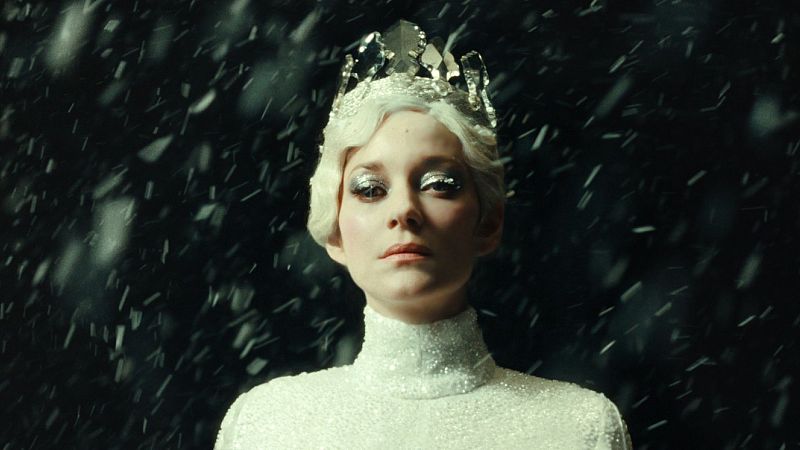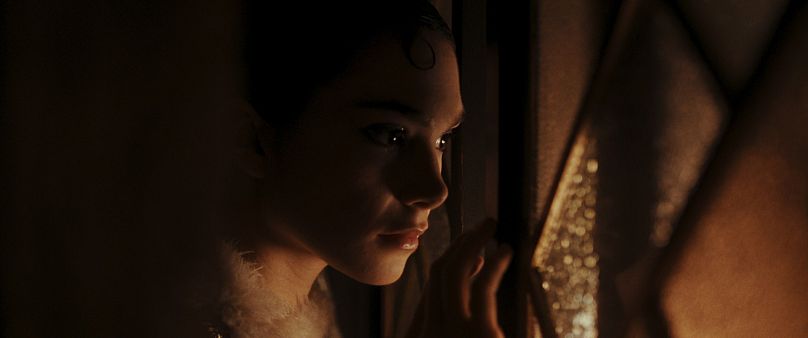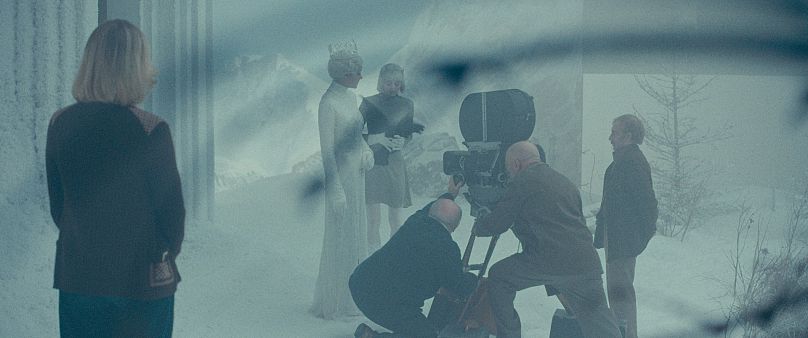Berlinale 2025 review: 'La Tour de Glace' ('The Ice Tower') - Marion Cotillard is the Snow Queen

Over the course of three films, from her 2004 debut Innocence to 2021’s Earwig via Evolution, one of our favourite European films of the 21st century, Lucile Hadžihalolović has established herself as one of the most singular voices in French cinema.
For her transfixing fourth feature, she’s reuniting with Marion Cotillard after Innocence as well as her Earwig screenwriter Geoff Cox to loosely adapt Hans Christian Andersen’s “The Snow Queen”. And chilly though it is, this ain’t no Frozen.
Like a lot of fairy tales, it begins with an unhappy orphan. Jeanne (Clara Pacini, in her first feature role) lives in a foster home in a small, mountainous village in 1970s France. She decides to flee and head to an ice rink she's seen on a postcard. There, she admires an elegant skater named Bianca and adopts her identity when the latter loses her purse.
With nowhere to sleep, she breaks into what seems to be an abandoned warehouse. It turns out she’s kipping in a film studio, where a production of The Snow Queen – one of her favourite tales - is being filmed. Famous and feared actress Cristina Van Der Berg (Marion Cotillard) is playing the central role and we learn through the chats between the extras that nothing escapes the “pitiless” Cristina.
True enough, she quickly finds out that Jeanne, who has managed to pass herself off as an extra as Bianca, has been sleeping at the studio. Or maybe she knew all along?
A relationship develops between them. An obsessive bond from Bianca’s part; a fascination from Cristina’s. And by crystal yanked from a costume or by bracelet pearl accidentally left behind, the two “will be connected forever” in a manipulative push-and-pull.
Those familiar with Hadžihalolović’s films will know the director’s affinity for stories brimming with brooding atmospherics and which deal with young characters faced with maturity-triggering circumstances. In adapting “The Snow Queen”, she distils the tale of a young girl’s quest for her missing flame and who becomes influenced by an older woman in order to make it something more. More enigmatic; more menacing; more glacial.
Glacial is the optimum word, as the form mirrors the content. The pacing is measured - to say the least - in this world of minimal dialogue, full of recurring motifs whose slippery purposes make them seem more pregnant with meaning. It’s also a powerfully stylish world to dive into, as the butterscotch lighting and shadowplay in The Ice Tower bolsters the dark fairy tale mood, which is peppered with other references to childhood classics. Little Red Riding Hood’s red coat, the bracelet pearls hitting the ground like breadcrumbs from Hansel And Gretel and the ogre figure Jeanne runs away from during her initial escape are some that spring to mind. They come together to tell the tale of heroine on the cusp of womanhood.
Central to this is Cotillard’s character. Initially, it seems that the celebrated French actress doesn’t get to do all that much apart from embrace a sense of noirish beauty and elusiveness, but what she creates in the second half adds layers to Jeanne’s quest.
Cristina is a diva-like Norma Desmond demanding a vampiric sacrifice from a younger version of herself, but also a wounded soul. The girl in Earwig may have had actual teeth of ice, but Cristina has a jaded heart that threatens to become irreversibly icy. She’s an actress who considers her glory days to be over and who sees a coming-of-age occur right before her eyes - while hers is long gone. Bianca drops her dead mother’s beads as if progressively abandoning her birth mother and opening herself up to a maternal substitute; Cristina recognises this and strikes during this adolescent awakening.
Or is there the possibility that she could resign herself to what she’s known all along: that she’s now a stepping stone for another to reach her true sense of agency?
To say that The Ice Tower’s layers are snowflake-levels of numerous is putting it mildly. There is also a fascinating amount of mise en abyme created throughout – chiefly through the fact that Andersen’s tale had the totemic presence of a mirror. This is replaced by a camera in The Ice Tower, creating a film within a film that offers up a meditation on how cameras, like mirrors, can reflect and deform reality. The Cristina / Snow Queen and Jeanne / Bianca dédoublements may simply a way to tell the tale of an older woman both cruelly and resolvedly imparting the love of the facetted medium of cinema itself.
The longueurs and prism-like layers in Hadžihalolović's film will frustrate and disorientate viewers looking for either more crystalized meaning or even something overtly stranger. And it’s true that even for fans of Innocence and Evolution’s sinister grooming rituals and Earwig’s haunting surrealism, this eerie reverie lacks an impactful sense of strangeness – something initially teased by the ominous title card featuring the American Horror Story font.
However, anyone yearning to be entranced by a frosty mood piece will find The Ice Tower’s intoxicating spell tricky to break.



